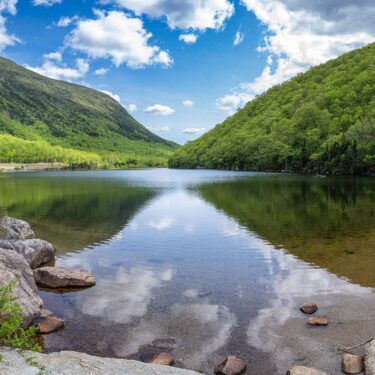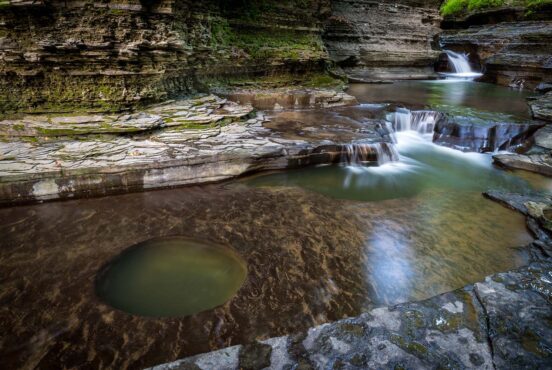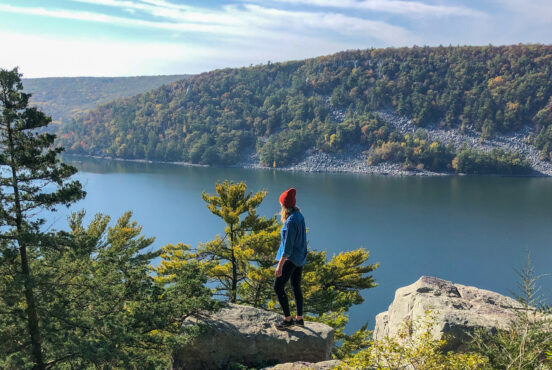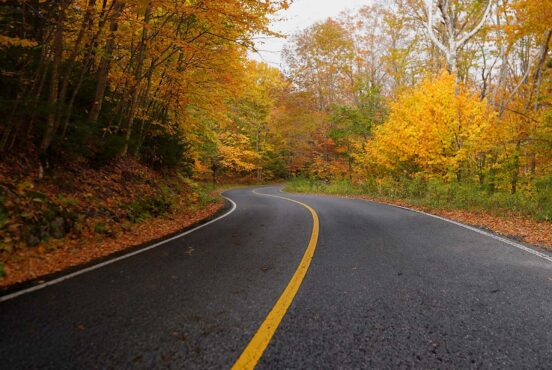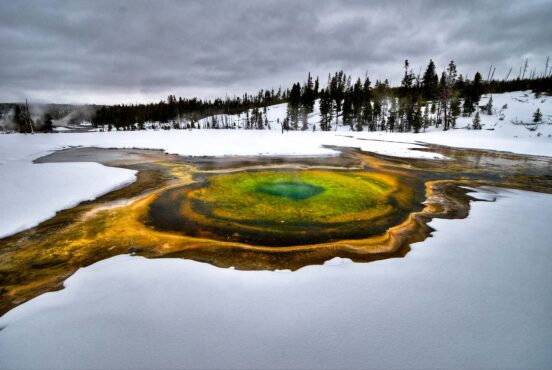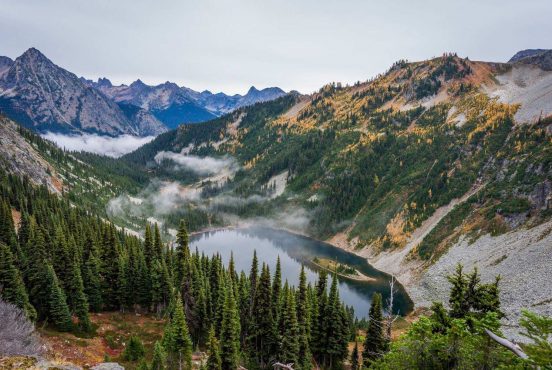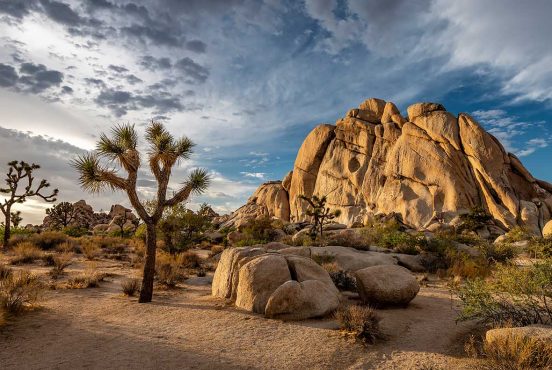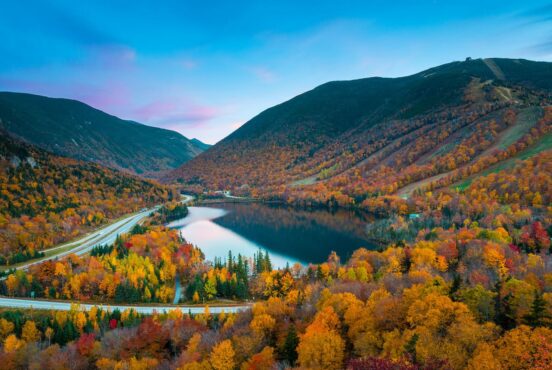Winter might make the ski slopes busy in the Granite State, but the trails are peaceful and serene.
While everyone else stays inside by the fire, head out onto the hiking trails where the paths are quiet and the views are endless. Even if you have hiked New Hampshire’s best trails in the summer, winter creates an entirely new landscape full of magic.
Winter is one of the best times to head outdoors because you get to experience things you wouldn’t otherwise. The fluffy, freshly fallen snow is naturally sound-absorbant, leaving you with a serenely quiet hike. A fresh coating of snow also allows you the chance to check out wildlife tracks, so make sure to grab your field guide. But there are also some other things to remember about winter versus summer hiking. Before you head out to the trails, make sure you’re prepared.
Before You Head Out
Weather is always a huge factor to consider no matter the season, but especially in winter. It’s important to check the weather of your hiking destination before heading out to make sure you have the proper gear. The Mount Washington Observatory has the best weather forecasts for the White Mountain National Forest region.
On top of the Ten Essentials of Hiking that you should always bring with you on a hike, there are some modifications when you venture out in the winter. Make sure you have good footwear to keep your toes warm and dry. Also, bring microspikes no matter what you think the trail looks like. They are small, light, and easy to carry. Other hikes will require snowshoes when the snow is deeper.
Also be prepared with merino wool base layers to keep you warm and dry, an insulating layer over that, and then a waterproof and windproof layer on the outside. Although the saying “there is no such thing as bad weather, just bad gear/bad planning” isn’t my favorite, it has some truth, especially in the winter.
Always remember to Leave No Trace and pack out what you pack in, these trails are only as good as we keep them. If you need a reminder on trail etiquette, check out this article – the guidelines still apply in the winter.
Lastly, don’t forget to drink water! This might seem silly but people don’t sweat as much (or might not think they sweat as much) on a winter hike and forget to drink water regularly. To keep your water from freezing, store your bottle upside down and stuff it in a wool sock. Trust me, it works.
1. Mount Tecumseh
View this post on Instagram
Why you should go: it’s a four-thousand-footer with spectacular views.
- Difficulty: challenging
- Length: 5.2 miles
- Elevation gain: 2300 feet
Most days throughout the summer, New Hampshire’s four-thousand-footers are overrun with hikers. In the winter, these trails see a lot less traffic and are even more majestic with a layer of snow on them. But the hike up Mount Tecumseh is not for a novice hiker and should only be attempted if you are 1) more experienced on the trails, especially those within the White Mountains, and 2) experienced in winter hiking specifically. The weather in the White Mountains is notoriously fickle so always be on the lookout for changes.
The trail leads you up next to Waterville Valley Ski area and starts off relatively flat. It picks up steepness fairly quickly and your only reprieve is when you reach the ridge about a quarter mile from the summit. Once on the top, take in the sweeping views and head back the way you came.
Related Read: 6 Backpacking Trips in the White Mountains That are Unforgettable
2. The Flume Gorge
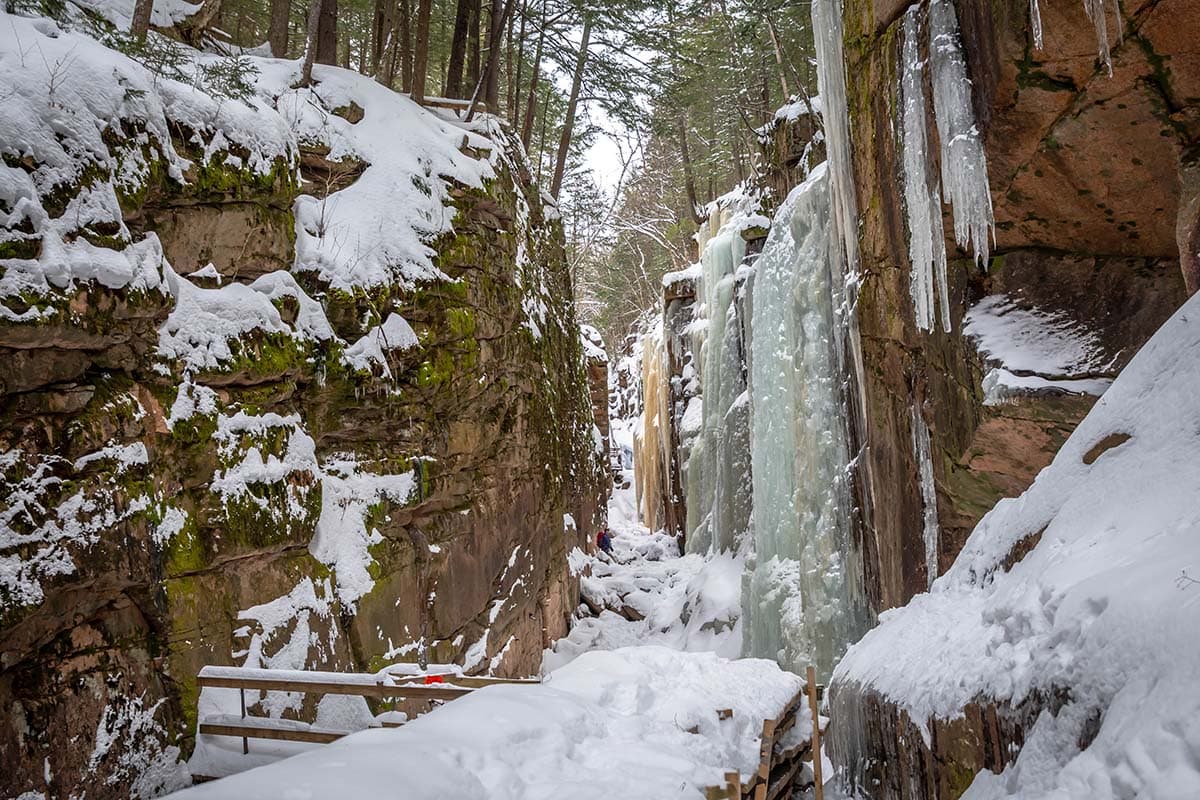
Why you should go: one of the best spots in the state to watch ice climbers.
- Difficulty: easy
- Length: 1.2 miles
- Elevation gain: 200 feet
As one of the most iconic trails in all of New Hampshire, the Flume Gorge does not disappoint. In the warmer months, you can hike this trail throughout its whole loop. However, in the winter, the trail closes at the raised boardwalk. But that doesn’t mean you should cancel your trip to the area.
It’s a very easy and relatively flat route that most people could hike. When you reach the end, you can watch the various ice climbers trying their hardest to climb the gorge walls. You can also take the Wildwood Path that goes north of the Great Boulder. This will lead you to Liberty Gorge and other unique features along the trail.
Related Read: The Best Time of Year to Visit New Hampshire
3. Lincoln Woods Trail
View this post on Instagram
Why you should go: fewer crowds and iconic fall foliage.
- Difficulty: easy to moderate (depending on mileage)
- Length: 9.4 miles
- Elevation gain: 500 feet
This trail is one of the most beautiful to do in the winter. Towering pine trees and picturesque bridges crossing frozen rivers are just a few of the things that make the trail through Lincoln Woods so wonderful. The beauty of this hike is that you can make it as long or as short as you desire.
Kids will love the flat, wide trail (as will parents) to explore and discover. You follow the east branch of the Pemigewasset River for the entirety of the trail. When you’re finished, head to Loon Mountain Resort for some sledding!
Related Read: Top 10 Romantic Getaways in Vermont to Keep the Romance Fiery
4. Mount Tom
View this post on Instagram
Why you should go: there might not be 360-degree views but there are gray jays.
- Difficulty: challenging
- Length: 5.0 miles
- Elevation gain: 2150 feet
Starting at one of the busiest trailheads in the White Mountains, the hike to Mount Tom is steep. As the northernmost four-thousand-footer in the Willey Range, Mount Tom does not disappoint. It’s just over 4,000 ft. above sea level with views mostly to the west, so it’s great for a sunset hike. The summit of Mount Tom is known for the gray jays that eat right from your hand. But remember the Leave No Trace principles and do NOT feed wildlife.
Pro Tip: If you want to tack on even more mileage (and cross another four-thousand-footer off your list) do the Mount Avalon, Field, and Willey Loop.
Related Read: 10 Beautiful Spots for Snowshoeing in Vermont
5. Ann Stokes Loop
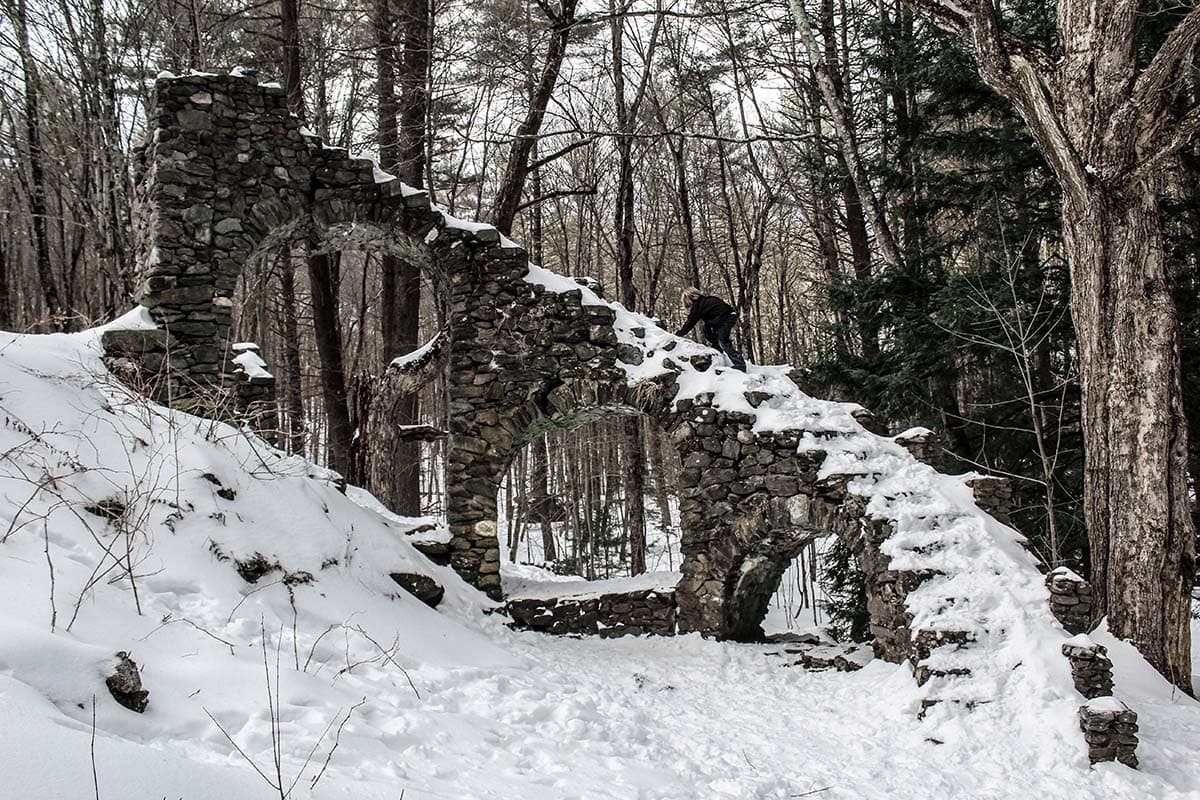
Why you should go: a wintry fairytale backdrop for all your Instagram-worthy photos.
- Difficulty: easy
- Length: 2.0 miles
- Elevation gain: 450 feet
Grab your Elsa costumes and head to your very own castle in Madame Sherri Forest. To be fair, it wasn’t ever a castle but, in fact, the home of a costume designer from New York, Marie Antoinette Sherri. She was known for her lavish parties and extravagant lifestyle. Today, the ruins only reveal the mansion’s foundation and the stone staircase.
The staircase is only about 100 feet from the trailhead so it’s an easy spot for those with children or mobility issues to get to. The staircase has been coined the “stairway to heaven” as it ends in midair, consequently leading to nothing. The stairs are not stable and the top portion collapsed in 2021, so pose next to the stairs instead of on them.
Related Read: 12 Best Hikes in the White Mountains For an Epic Adventure
6. Champney Falls
View this post on Instagram
Why you should go: it’s got the largest icicles you’ll ever see.
- Difficulty: moderate
- Length: 3.0 miles
- Elevation gain: 700 feet
The hike to Champney Falls sends you through an enchanted forest and ends at some magical cascades. Throughout the hike, the trees open up to views of the surrounding White Mountains, which are breathtaking no matter the season.
But with no leaves on the trees, winter is the ideal time to take in those views overlooking the ground below. Once you reach the end, the frozen waterfalls cascade down the weathered rocks and glisten in the sun. Tread carefully here and make sure to bring traction if you want to walk through the frozen landscape.
Related Read: 8 Beautiful New Hampshire Scenic Drives Worth Exploring
7. Odiorne Point State Park Loop
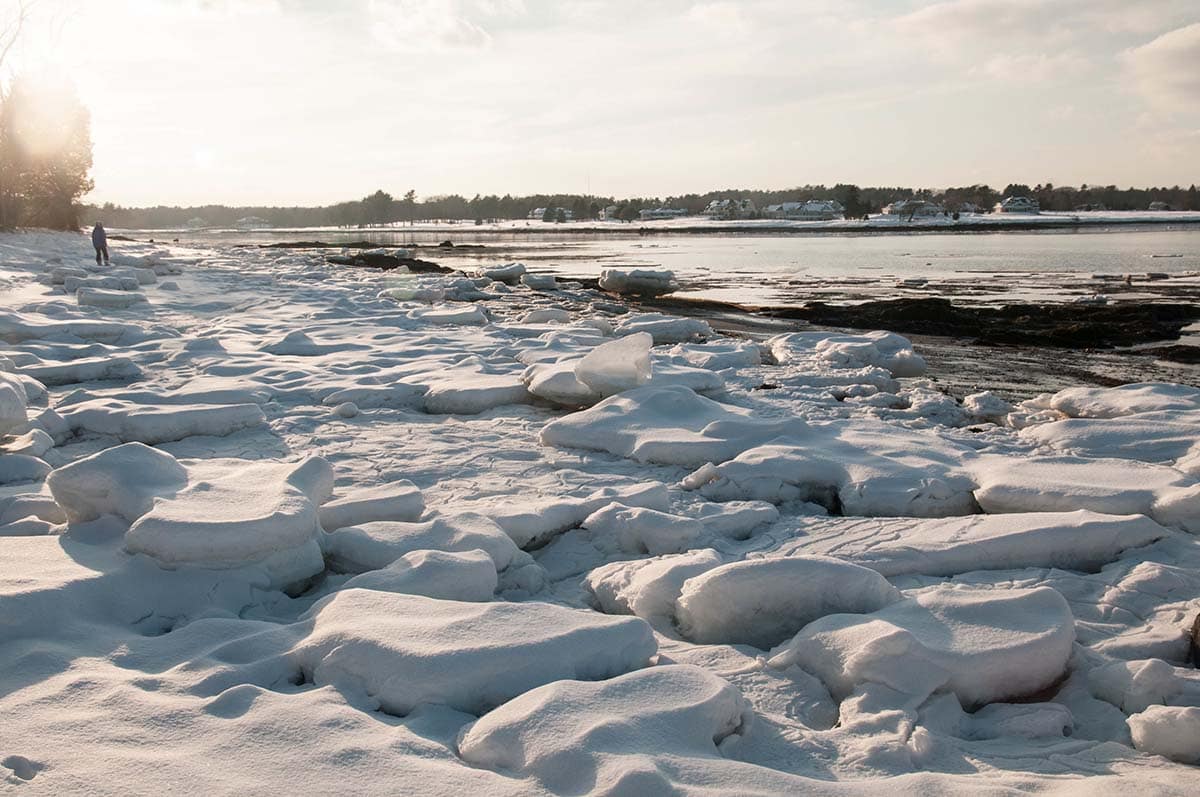
Why you should go: a winter sunrise at this beach is a stunning sight
- Difficulty: easy
- Length: 3.0 miles
- Elevation gain: 100 feet
Swap your bathing suits and beach towels for snowsuits and sleds when you visit Odiorne State Park. While most adventurers tend to stay away from the beach in the colder months, this coastal state park beckons you to visit. The loop around the park is ideal for anyone who needs a bit of time away from the hustle and bustle of Boston, Portsmouth, and Portland.
The trail meanders on and off the beach, so stay as long or as little as you’d like. I suggest still bringing sand toys for those with kids because snow castles are just as magical as sand castles.
Related Read: 10 Best Hikes in the Berkshire Mountains to Get Away From it All
8. Blue Job Mountain
View this post on Instagram
Why you should go: an easy climb to great views.
- Difficulty: easy
- Length: 1.0 mile
- Elevation gain: 350 feet
You don’t have to break a sweat to get some of the best views in the Granite State when you climb Blue Job Mountain. The hike is a gradual ascent up a tree-lined path until about the halfway mark where the trail gets steeper (but only briefly).
The fire tower at the summit is only 0.4 miles from the trailhead, so the steepness doesn’t last long. Head up the stairs of the fire tower (do not attempt in poor conditions) to check out the full range of views at the top. On a clear day, you can see the White Mountains to the north and the ocean to the east.
Related Read: 14 Best Hikes in Maine for Exploring the Great Outdoors
9. Kearsarge North Fire Tower
View this post on Instagram
Why you should go: the best 360-degree views in the area.
Difficulty: challenging
Length: 6.5 miles
Elevation gain: 2600 feet
The trail up to the Kearsarge North Fire Tower is not for the faint of heart. The steady ascent proves to be extra difficult in the wintertime, often having many frozen spots along the path (this is where the microspikes come in handy). You’ll walk through a typical New Hampshire forest consisting of American beeches, eastern hemlocks, oaks, and maples, all of which look beautiful covered in snow.
As you get closer to the summit, the trees will start to thin out until you break the treeline a quarter-mile from the tower. The fire tower was built in 1913 and used until the 1960s. Nowadays, it’s not only used to soak up amazing views but it can also be used for overnighters.
Pro Tip: Stay at the fire tower to introduce yourself to winter camping. You won’t need to bring a tent but bring warm sleeping bags and insulated sleeping pads. The views at sunset and sunrise will leave you speechless.
Explore More in New Hampshire
Get epic travel ideas delivered to your inbox with Weekend Wanderer, our newsletter inspiring thousands of readers every week.
Seen in: Hikes, New England, New Hampshire, Northeast, Winter

